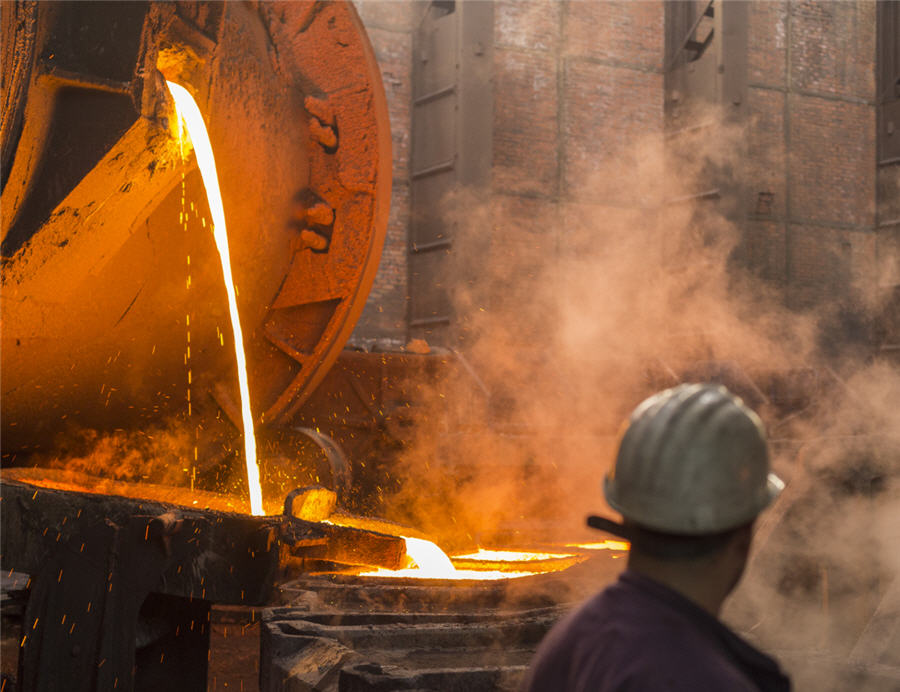Copper smelters in China wary of BHP-Anglo tie-up

Chinese smelters, the world’s biggest buyers of mined copper, are concerned they will lose power to negotiate prices if BHP Group, known locally as “the big miner”, succeeds in its bid for rival Anglo American.
BHP, the world’s largest listed mining group, is fine-tuning an offer that could make it the biggest producer of copper, a metal in high demand as the world seeks to shift towards electric vehicles and a lower carbon economy.
The proposed takeover would give BHP control of roughly 10% of global mined supplies, surpassing Chile’s Codelco and Freeport-McMoRan.
“This is not good news for China given the heavy reliance on external supply, and Chinese companies hold limited resources,” Zhang Weixin, a metal analyst at China Futures, said of the potential tie-up.
The China Smelters Purchase Team (CSPT), a group of top smelters that negotiates with miners on yearly prices to treat and refine copper, has no current plans to urge Beijing to investigate the deal, three sources familiar with the matter said.
CSPT’s head could not be reached for comment and BHP declined to comment.
China’s State Administration for Market Regulation also did not immediately respond to a request for comment.
There is a precedent of Chinese regulators getting involved in deals that impact copper supply.
In 2011, Glencore agreed to China’s demand that it sell its interest in Xstrata’s Las Bambas copper project in Peru to clinch their multi-billion dollar deal.
The world’s leading consumer of the metal, China imported 27.54 million metric tons of copper ore and concentrate in 2023, worth $60.1 billion, customs data showed, more than half of global supplies.
Tight market
In China, BHP is most active in the spot market, where it sells to domestic smelters using tenders, according to smelters and analysts, signing contracts for fixed volumes to be priced via an index provided by third parties.
By comparison, rival miners Freeport and Antofagasta agree an annual fixed sale price with China’s smelters that is widely used as an industry benchmark.
Chinese copper smelters said the prospect of more supply being sold under index pricing could increase uncertainty for costs and planning.
None of the smelter officials wished to be identified given the sensitivity of the matter.
One of them said index pricing meant smelters would be unable to estimate production costs and to draw up a full-year production plan.
Smelters are still recovering from supply shortages driven by the December closure of the First Quantum’s Cobre Panama mine, which drove down treatment charges (TCs) – their main source of income.
Treatment charges are fees paid by miners for converting raw materials into metal. They fall when mine output decreases as smelters have to compete for concentrate.
Adding to their difficulties, the concentrate market is expected to be in deficit for the next three years.
Last week, spot treatment charges (TCs) in China turned negative for the first time since pricing agency Fastmarkets started the index in 2013.
That compares with 2024 benchmark TCs settled between Chinese smelters and Freeport and Antofagasta at $80 per ton.
Much as consolidation raises concerns, however, William Adams, head of base metals research at Fastmarkets in London, said it could calm the market longer term by tackling the high cost and risk of developing mines.
“Look at the current tightness in spot treatment and refining charges, which is because there is insufficient mine supply to meeting smelter’s demand, highlights the need to invest more upstream,” he said.
(By Siyi Liu, Julian Luk, Mai Nguyen and Melanie Burton; Editing by Tony Munroe and Barbara Lewis)
{{ commodity.name }}
{{ post.title }}
{{ post.date }}

Comments